A Key to Efficient Electrical Engineering: Introduction to the Temperature Coefficient of Resistance
The temperature coefficient of resistance (TCR) measures how a material's resistance changes with temperature. This property is important for designing and improving electronic parts used in many industries. As temperatures go up, the way atoms and molecules move within materials changes, impacting their electrical and physical properties. This article explains TCR with simple math, shows its importance in materials like metals and semiconductors, and highlights its impressive role in everyday electronics and safety systems, such as those in nuclear reactors. Knowing how temperature affects materials helps engineers and scientists predict behavior and ensure technology works well in different temperatures.Catalog

Figure 1: Temperature Coefficient
Temperature Coefficient
The temperature coefficient, denoted as α, measures the relative change in a physical property R in response to a change in temperature dT. The relationship is mathematically represented by the formula:

Where α is expressed as an inverse temperature, typically in units like 1/K or K−1. When αΔT remains less than 1, a linear approximation can be applied effectively. This approximation allows for the calculation of R at any given temperature T based on its known value at a reference temperature T0, expressed as:

where ΔT represents the difference between T and T0. This linear approach simplifies estimations but is generally only applicable when the temperature difference is small and α is relatively constant. The use of temperature coefficients spans various scientific and industrial applications, especially in characterizing the electrical and magnetic properties of materials, as well as their reactivity, with typical values ranging between 2 and 3 for most reactions.
Temperature Coefficient of Resistance
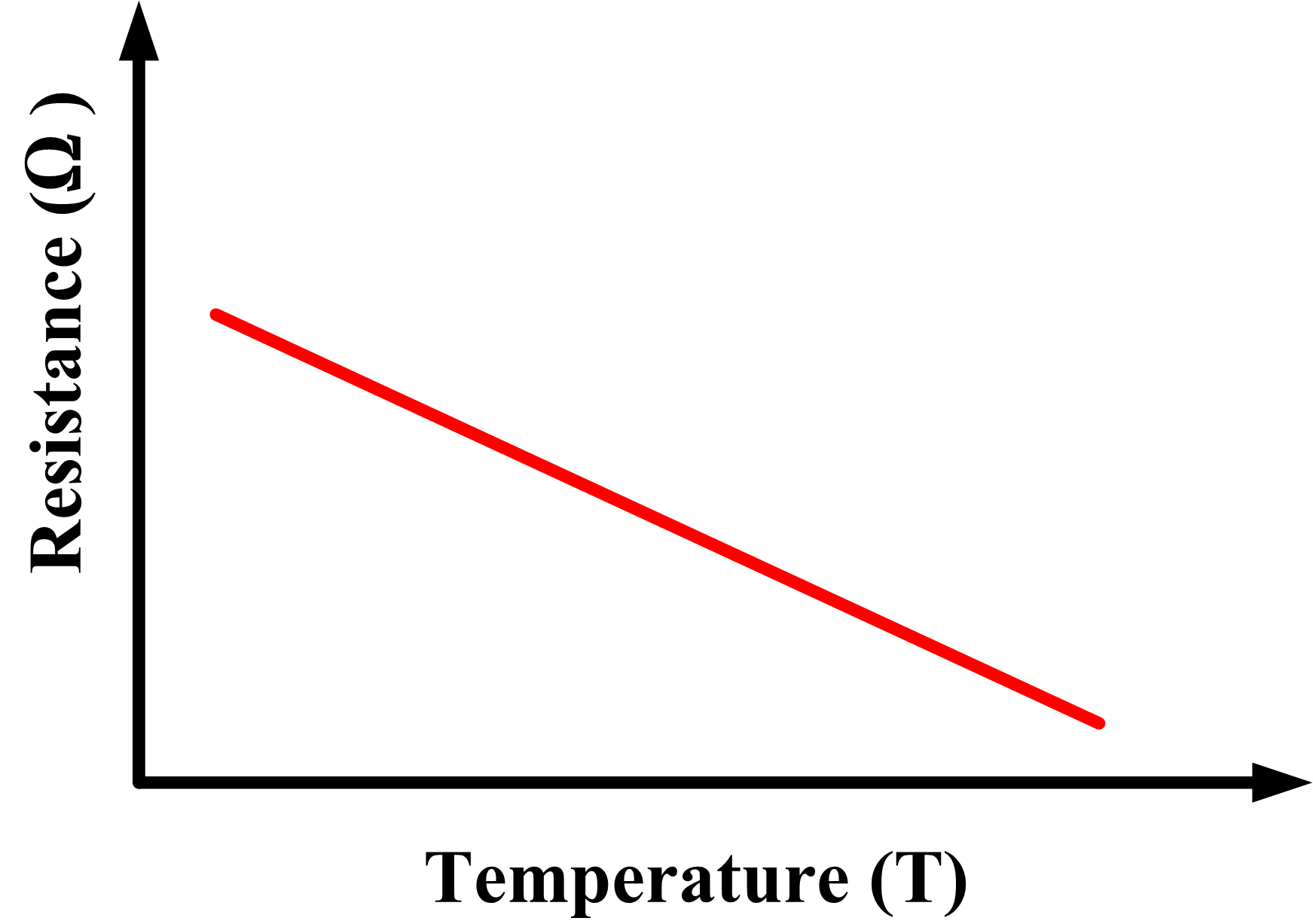
Figure 2: Resistance and Temperature Illustration
The temperature coefficient of resistance (TCR) measures how a material's electrical resistance changes with temperature. When designing electrical components that function dependably at a range of temperatures, this attribute is needed. TCR is particularly valuable for metals, where resistance usually rises as temperature increases. This happens because higher temperatures cause more electron collisions, which slow down the flow of electric current.
The relationship between resistance and temperature is shown by the equation:

In this formula:
R is the resistance at temperature T,
Rref is the reference resistance,
α is the temperature coefficient of resistance,
Tref is the reference temperature.
Engineers need to know this equation to ensure electrical components perform well at different temperatures. Understanding TCR helps in choosing the right materials and designing systems that minimize the negative effects of temperature changes.
Relation Between Temperature and Resistance
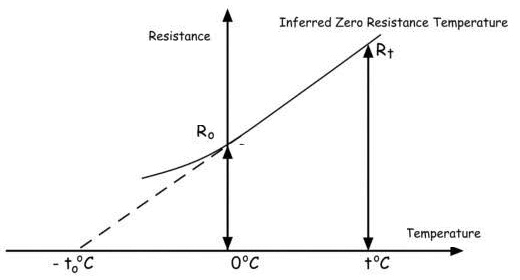
Figure 3: The Temperature Resistance
The relationship between temperature and resistance in conductors is given by:

Here:
RT is the resistance at temperature T,
R0 is the initial resistance at a baseline temperature T0,
α is the temperature coefficient of resistance.
This formula shows that resistance change is dependent on the initial resistance, the change in temperature, and the TCR α. For conductors, as the temperature increases, the increased kinetic energy of electrons leads to more frequent collisions, thereby increasing resistivity. The overall change in resistivity is primarily due to changes in the average time between collisions, despite the negligible change in the number of charge carriers. Understanding these dynamics is good for creating materials suited to specific temperature conditions, ensuring the reliability of electrical devices in various environments.
Types of Temperature Coefficient of Resistance
There are two main types of temperature coefficients: positive and negative. Metals typically exhibit a positive coefficient, meaning their resistance increases with temperature. In contrast, semiconductors and insulators often display a negative coefficient, where increased temperature leads to a higher number of charge carriers, reducing overall resistance. Choosing the right material for a given application depends on this dichotomy, especially in systems that need to regulate temperature precisely.

Figure 4: Positive and Negative Temperature Coefficient
Positive Temperature Coefficient of Resistance (PTC)
Materials with a Positive Temperature Coefficient (PTC) of resistance increase their resistance as they get hotter. This quality makes them great for situations where reliable temperature control is needed. PTC materials can self-regulate, meaning they avoid overheating by naturally limiting their highest operating temperature. As the temperature goes up, their resistance rises, which cuts down the current flow and controls heat production.
Different materials, like some rubbers and composite polymers, are designed to show this behavior. They are made to have a sharp rise in resistance at certain temperatures. This quick change in resistance is very useful for safety-sensitive uses, where keeping a specific temperature range is good to avoiding equipment failure or hazards. Examples include over-current protection in electrical circuits and self-regulating heating elements in household devices. Modern technology cannot function without PTC materials because of their inherent safety as well as their strength and dependability.
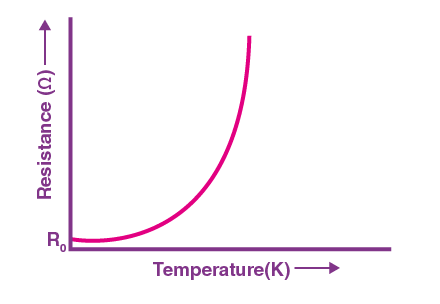
Figure 5: Shows the Value of Resistance Increases
Negative Temperature Coefficient of Resistance (NTC)
Materials with a Negative Temperature Coefficient (NTC) of resistance lower their resistance as they get hotter. For many applications that require accurate control and sensitive temperature measurements, NTC materials are valuable. Their decreasing resistance with rising temperatures makes them perfect for temperature sensors and thermistors used in everything from home appliances to complex industrial systems.
NTC materials provide temperature sensor feedback so control systems can adjust ventilators, heaters, or coolers. In electrical systems, handling inrush currents is another major use. When power is first applied, NTC thermistors can limit the surge of current by having higher resistance at lower temperatures, which then drops as they heat up. This feature helps protect delicate electronic parts from damage due to high startup currents, improving the longevity and reliability of electronic systems.

Figure 6: Shows the Value of Resistance Lower
Temperature Coefficient of Resistance Example
Platinum resistance thermometers are exemplary applications of the temperature coefficient of resistivity. determining the melting point of tin by observing the change in resistance provides practical insights into the utility of temperature coefficients in real-world applications, emphasizing their importance in scientific and industrial measurements.
Example: A platinum resistance thermometer has a resistance R0 = 50.0 Ω at T0=20 ºC. α for Pt is 3.92×10-3 (ºC)-1. The thermometer is immersed in a vessel containing melting tin, at which point R increases to 91.6Ω. What is the melting point of tin?

Temperature Coefficient of Elasticity
The main property of a material that describes how its elastic modulus, or stiffness, varies with temperature is its temperature coefficient of elasticity. Elastic modulus, also known as Young’s modulus, measures a material's stiffness. It dictates how much a material deforms under stress and is defined as the ratio of stress (force per unit area) to strain (deformation in response to stress). In general, a higher elastic modulus indicates a stiffer material. The elastic modulus generally decreases as temperature increases, although this relationship varies among materials. This decrease occurs because rising temperatures increase atomic or molecular vibrations, reducing the forces that contribute to a material’s stiffness. As the material heats up, the atoms vibrate more vigorously, causing temporary misalignments in the structure and resulting in decreased stiffness.
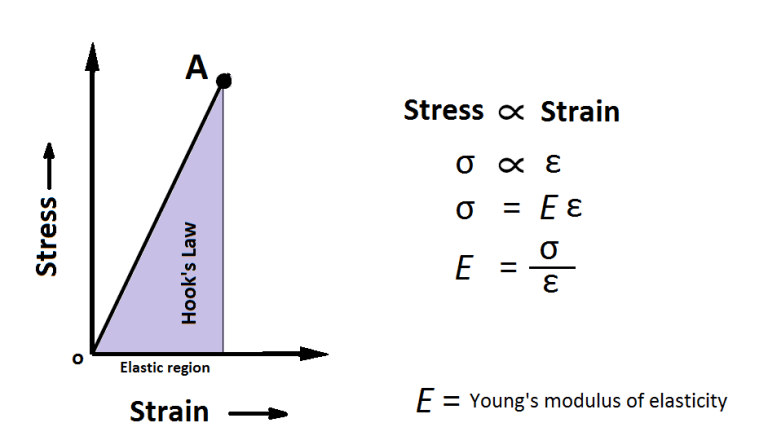
Figure 7: Elastic Modulus
The temperature coefficient of elasticity quantifies the change in stiffness with temperature. It is usually expressed as a fractional change in modulus per degree of temperature change. A negative coefficient means the elastic modulus decreases as temperature increases. For many different kinds of applications, the ability to predict material behavior under varied heat conditions is important, and this coefficient helps with that.
Materials subject to thermal stresses, like those used in aerospace, automotive, and construction industries, require an understanding of the temperature coefficient of elasticity. Thermal stress occurs when a material undergoes a temperature change while being restrained, causing expansion or contraction. If the material cannot deform freely due to environmental or structural constraints, stress builds up, potentially leading to failure.
Temperature Coefficient of Reactivity
The temperature coefficient of reactivity quantifies changes in reactor reactivity with temperature. A negative temperature coefficient is ideal because it means that as the reactor's temperature rises, its reactivity decreases. Because it reduces the reactor's power output as it heats up, this negative feedback system helps to minimize overheating and possible accidents.
Several factors influence the temperature coefficient of reactivity, including changes in fuel properties, moderator characteristics, and overall reactor configuration. As temperature increases, nuclear fuel expands, decreasing its density, which reduces neutron interactions and lowers reactivity. In reactors using a moderator, such as water, to slow down neutrons, increasing temperature reduces the moderator's density, making it less effective at slowing neutrons and thus reducing reactivity. Higher temperatures also affect the absorption cross-sections of resonance absorbers in the reactor fuel, enhancing their ability to capture neutrons, which lowers reactivity.
A self-regulating safety feature that must be present for preventing reactor overheating and guaranteeing stable operations is a negative temperature coefficient of reactivity. It acts as an automatic control mechanism, maintaining safe power levels without external intervention. For instance, if reactivity unexpectedly increases, causing the reactor to overheat, the negative temperature coefficient automatically reduces reactivity, cooling the reactor and stabilizing operations.
Material Variations and Their Applications
The temperature coefficient of resistance varies particularly across different materials, a detail captured in comprehensive tables that list the coefficients for various metals and alloys at 20°C. Metals such as nickel and iron have high positive coefficients, indicating substantial changes in resistance with temperature changes. Conversely, alloys like nichrome and constantan exhibit minimal or slightly negative coefficients, making them suitable for applications that require stable resistance across temperature changes, such as in precision resistors and temperature-sensitive circuits.
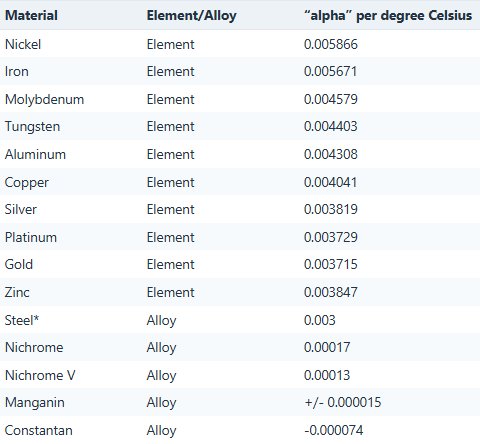
Figure 8: Table of Temperature Coefficients Resistance for Common Metals
Practical Implications in Circuit Design
Designing circuits that have to operate under specific thermal conditions requires an understanding of and ability to calculate the temperature coefficient of resistance. For example, a standard electronic circuit operating at 20°C might experience significant resistance changes if the temperature increases to 35°C, especially if it uses copper wiring (α=0.004041).

Figure 9: An Example Circuit To See How Temperature Affect Wire Resistance
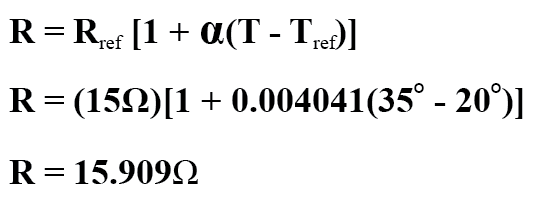
Figure 10: Solution using the Formula
These resistance changes can alter voltage distribution across the circuit components, impacting overall power efficiency and heat management. This feature is particularly required for large-scale applications where temperature fluctuations are noticeable over long distances, such as power transmission.
Conclusion
In contemporary science and engineering, studying the temperature coefficient of resistance (TCR) is beneficial for numerous applications and materials. TCR is best for improving device performance and safety, from basic principles in metals and semiconductors to practical uses in electronic circuits. Its role in safety systems, like nuclear reactors, shows how remarkable it is for stability and preventing failures. Understanding and managing TCR is still relevant as materials are subjected to more harsh environments and technological advancements. Mastering TCR enables engineers to create more effective and adaptable electronic systems.
Frequently Asked Questions [FAQ]
1. Why do metals have a negative temperature coefficient of resistance?
Metals have a negative temperature coefficient of resistance because, as their temperature increases, the atoms within the metal vibrate more intensely. This increased atomic vibration causes more frequent collisions of electrons (which carry electrical current) with the vibrating atoms, thus increasing resistance. However, the ability of electrons to move through the metal also increases with temperature, often at a rate that exceeds the increase in collisions. As a result, the overall resistance of the metal decreases with temperature.
2. What happens when the temperature coefficient of resistance is negative?
When the temperature coefficient of resistance is negative, the resistance of a material decreases as its temperature increases. This behavior is typical in metals, meaning that they become better conductors of electricity at higher temperatures.
3. What is the meaning of temperature coefficient of resistance?
The temperature coefficient of resistance quantifies how the resistance of a material changes with temperature. It is typically expressed as a fractional change in resistance per degree of temperature change. A positive coefficient indicates an increase in resistance with rising temperatures, while a negative coefficient indicates a decrease.
4. Which material does not have a negative temperature coefficient of resistance?
Insulators and semiconductors typically do not have a negative temperature coefficient of resistance. Unlike metals, these materials often show an increase in resistance as temperature increases, which corresponds to a positive temperature coefficient.
5. What is the zero-temperature coefficient of resistance?
A zero-temperature coefficient of resistance means that a material’s resistance remains constant regardless of changes in temperature. For some applications, where it's need to maintain constant electrical performance over a variety of temperatures, this feature is quite desirable.
6. Which material has zero temperature coefficient of resistance?
Certain alloys, such as Manganin (composed of copper, manganese, and nickel), and specific formulations of nickel and iron, are engineered to have a zero-temperature coefficient of resistance at a particular range of temperatures. Precision resistors and other components that require consistent resistance use these materials.
7. What is the advantage of a negative temperature coefficient?
The advantage of a negative temperature coefficient is that it allows for devices to self-regulate their temperature through resistance. For example, as a metal heats up and its resistance decreases, it can handle more electrical current without further heating, potentially preventing overheating in electrical circuits. This property is useful in applications such as heating elements and temperature sensors.